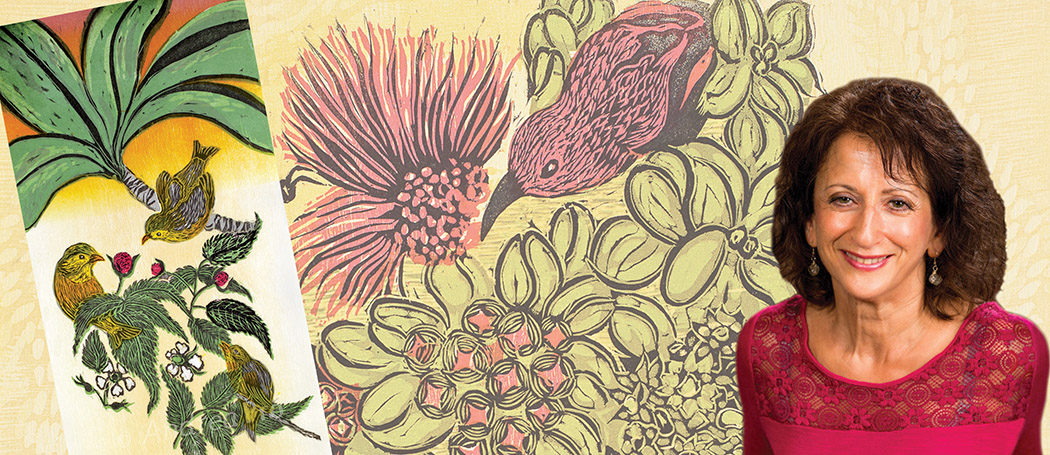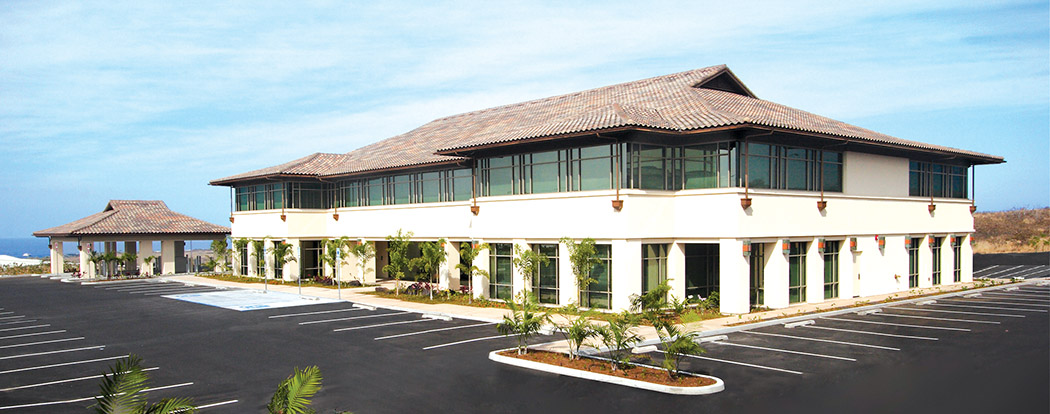
Amy B. H. Greenwell Ethnobotanical Garden: One Woman’s Vision to Preserve Hawaiian Heritage
By Lara Hughes
The Vision

Amy Beatrice Holdsworth Greenwell was a woman with ideas beyond her time. As it goes, when one has a vision, itʻs essential to have help from others to carry it forward into the future. Amy succumbed to cancer in 1974 when she met an untimely death at the young age of 53; however she left a lasting wish: that her home in South Kona be turned into an ethnobotanical garden for the community to enjoy.
Bishop Museum anthropologists Douglas Yen, Yoshihiko Sinoto, and Kenneth Emory honored the friendship they had forged with Amy over the years by taking a lead in the development of the allotted land she willed to the museum. Amy’s brother Sherwood Greenwell, plus a passionate succession of garden managers contracted by Bishop Museum, including archeologist Rose Schilt, visionary Brien Meilleur, and the latest manager and horticultural specialist Peter Van Dyke, all had a hand in making Amy’s dream a reality.
Amy’s garden hired its first on-site employee, John Rozett, in 1979. It opened to the public in 1988. “She had this vision that these parcels could be developed into a botanical garden in the pre-Cookian style,” says Peter. “Now the garden has extensive collections, and at Amy Greenwell Garden some of the rarest native plants in the country are curated.”
Around 1990, the garden accepted an invitation to join the Center for Plant Conservation, a national network of botanical gardens responsible for overseeing a prodigious collection of rare and endangered plants in the United States. Many of the critically imperiled Hawaiian flora present at the garden were, and continue to be, the perfect addition to such an important compendium.

The Woman
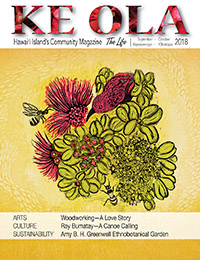
Many people know of Amy’s name through the ethnobotanical garden in Kealakekua; however, many still may not know of the amazing archeology and flora behind the garden-legacy of rare native Hawaiian plants sustained through her foresight. Amy’s cousin, Maile Melrose, wanders the garden on a regular basis. She fondly recounts memories of her relative and garden founder, “She was scientific. She was an amateur archeologist; she was an amateur botanist as well.”
At a time in history when American society idolized domesticity and a woman’s primary role was that of a homemaker, Amy chose not to marry. Instead, she enrolled in university. “She attended Stanford and was a nurse’s aide during World War II,” says Maile, “She went into Queens Hospital on the night of Pearl Harbor. She was there. She was perfect … she was just wonderful.” According to Maile, it was also thanks to Amy’s striking good looks that she also became a poster girl for Hawaii Electric Light Company: an example of the courageous women being thanked for their service during the war.
The Preservation
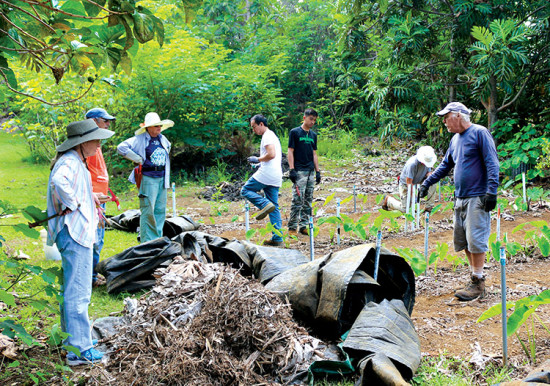
Growing among the plants at the garden is an unmatched passion to keep Amy’s legacy alive, its roots being fed by a local group of plant nerds, garden aficionados, anthropology enthusiasts, and archeology buffs, each sporting their own version of a green thumb.
The garden was closed to the public in 2016 and remains closed today. In response, a group of green volunteers founded an organization called the Friends of Amy B. H. Greenwell Ethnobotanical Garden. The mission of the Friends is to ensure that the garden is cared for and re-opened to the public, as they believe Amy would have wanted. They are currently trying to buy the garden from Bishop Museum, and have secured substantial grants already.

Maile serves as the president of the organization while Shirley Kauhaihao, a Kona lauhala weaver and celebrity chef of traditional Hawaiian food, along with Dr. Noa Kekuewa Lincoln, a Stanford PhD of terrestrial biochemistry and social ecology, serve as the two vice presidents. Noa also published a guidebook on the various native plants at the garden. His vision for the garden remains one of preservation for future generations, “The garden presents an opportunity to preserve and represent an alternative value system in regards to agriculture and perpetuating agricultural traditions that existed in Hawai‘i for hundreds of years and, in many cases, represents the ancestors of those who use the garden.”
Members and volunteers visit the garden each Saturday to help Peter with weeding, mulching, fertilizing, trimming, digging, and any other jobs that come with the territory. Agricultural techniques developed by ancient Hawaiians in their cultivation practices are often used in the propagation of the garden, including utilizing the leaves of the ‘ulu (breadfruit) tree for mulch on other plants such as ‘awa (kavakava or Piper methysticum), piling ‘uala (sweet potato) vines back on top of themselves for growth control, and dry-land kalo (taro or Colocasia esuculenta) farming. In fact, the kalo patch being promulgated on the garden grounds features more than 60 different heritage-cultivar varietals of kalo alone.
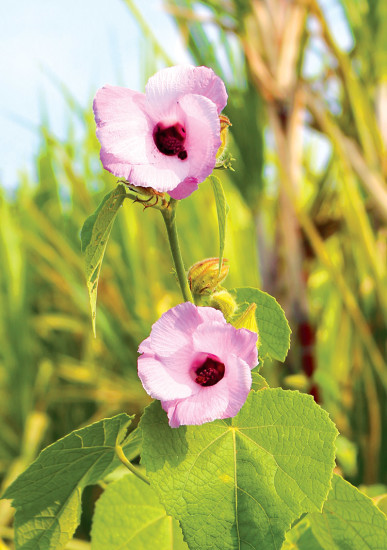
Visiting archeologist Dr. Jack Rossen makes his way to the garden to volunteer whenever he is in Hawai‘i. As a member of the Friends of Amy B. H. Greenwell Ethnobotanical Garden, he also enjoys sharing news of his local finds in archeo-botany with Peter. Thanks to collaborative projects between Peter and Jack, hundreds of students have been able to visit the garden over the past 15 years.
Jack says he continues to return regularly, “This place is special because, as an archeologist, it’s a remnant of the Kona agricultural field system. There is very important archeological material here.”
He points out that while the garden is 12 acres in size, it represents only a fraction of the 125 square mile Kona agricultural field system that was once cultivated by ancient Hawaiians as far back as 800 years ago. “Some of the walls that they built,” he says, “the kuaiwi, are still here.”
These kuaiwi (long, straight stone wall) played a major role in ancient Hawaiian agriculture. Not only did they separate the different fields and varying crops, but they also acted as a place where excavated rocks could be consolidated. The kuaiwi were used for mulching and ancient Hawaiians would plant crops such as mai‘a (bananas) and kī (ti) along the walls as the stones would protect the roots while holding in moisture, which helped with cultivation in the drier areas of the island.
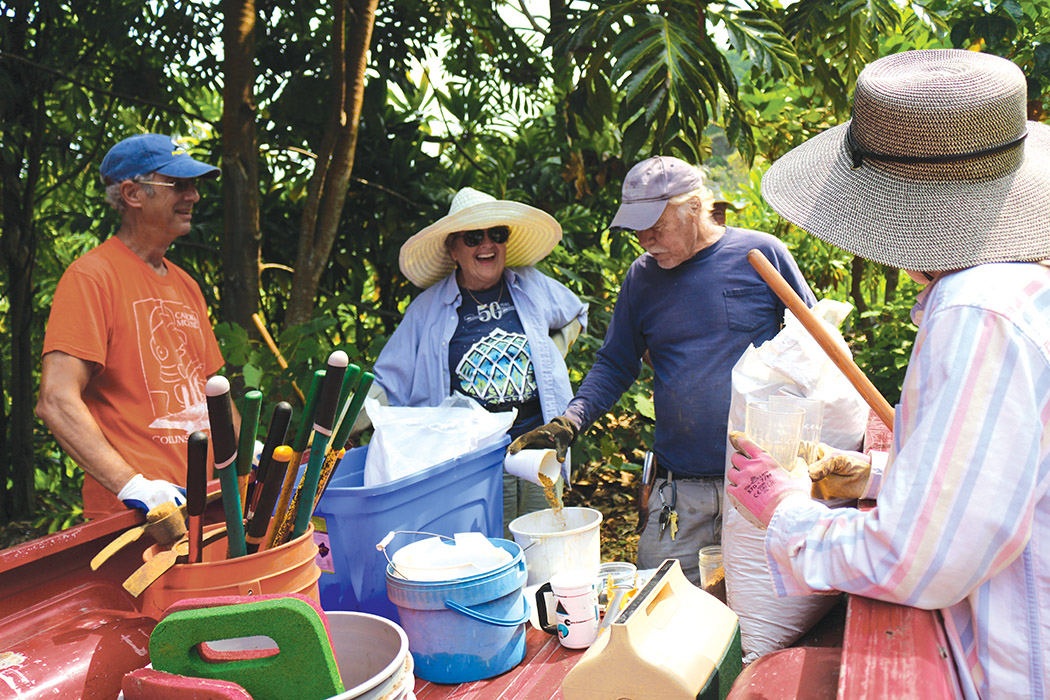
The Garden
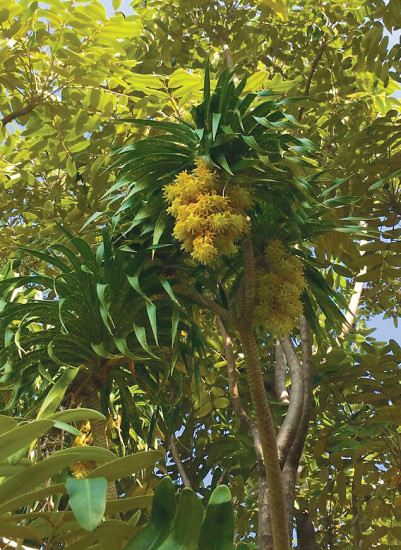
Overall, the garden boasts a rich history and community support, perhaps none being more important than the interest in the hundreds of types of native plants currently grown on the property. Walking through the garden, Maile meanders through the trees and shrubs, pointing out different species, talking about their importance, “This one doesn’t exist in the wild [on Hawai‘i Island] anymore,” she says as she shows a group of volunteers an endemic endangered specimen of her favorite flower, Hiddenpetal Indian Mallow (Abutilon eremitopetalum), a plant in the hibiscus family. This plant originated on Lāna‘i, and boasts tiny flowers, which an untrained observer might easily overlook unless it was being shown to them. “Hawai‘i is the only place that has this varietal of petal-less abutilon,” adds Maile.
As the group continues through the garden, there are frequent signs stating “extinct in the wild,” “only 10 plants in existence today,” and “have disappeared altogether from the island of Hawai‘i.” It becomes clear that this garden is a labor of love, a rare treasure, and anyone who comes here is experiencing something truly unique.
The garden today has four different sections of Hawaiian plants, including kahakai (costal zone), wao lama (dry forest), māla (Polynesian introduced crops), and wao lipo (wet forest zone). As a kanaka ‘ōiwi (native Hawaiian son) Noa says, “What makes Hawai‘i special is the highest rate of endemism in the world, and now in contrast, the highest rate of extinction in the world. [Also] what makes Hawai‘i special is the highly specific place-based adaptation of our ancestors.” He believes that the garden provides a unique opportunity to educate youth on the native Hawaiian environment and ecosystems.
The Hope
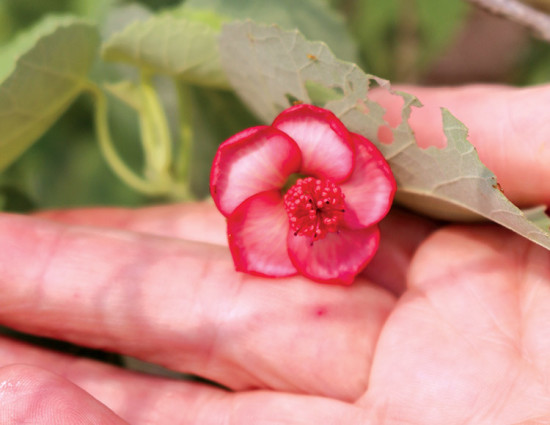
As the property remains closed to the public, and grants to purchase it are not easy to acquire, the future seems uncertain. However, there is optimism among those passionate about preserving Amy B. H. Greenwell Ethnobotanical Garden.
Peter reflects, “On one side it’s about developing a resource for the community and seeing how important it is to hold on to the plants that are part of the cultural traditions that have the capacity to bring people together.” For Peter personally, he says, “It’s really just about having this wonderful opportunity to work with all of these great plants. I think my first love is horticulture and this is a dream job for somebody who loves horticulture. The plants are beautiful so you get this ornamental aspect that you get to play with and they have all of this cultural significance. They have all of these tremendously interesting stories behind them. Knowing that it’s not just some isolated private garden is important to me. I want to know that it has meaning in the community.”
Maile adds, “The future of Amy’s Garden is bright. We are dedicated to success because we know how much this garden means to the people, not only of Kona and Hawai‘i, but truly, to people from all around the world. It is a wonderful garden and it must be present in our lives in perpetuity.” ❖
For more information: www.amygreenwell.garden/
Mahalo Kona Coast Realty – Sustainability Story Sponsor

